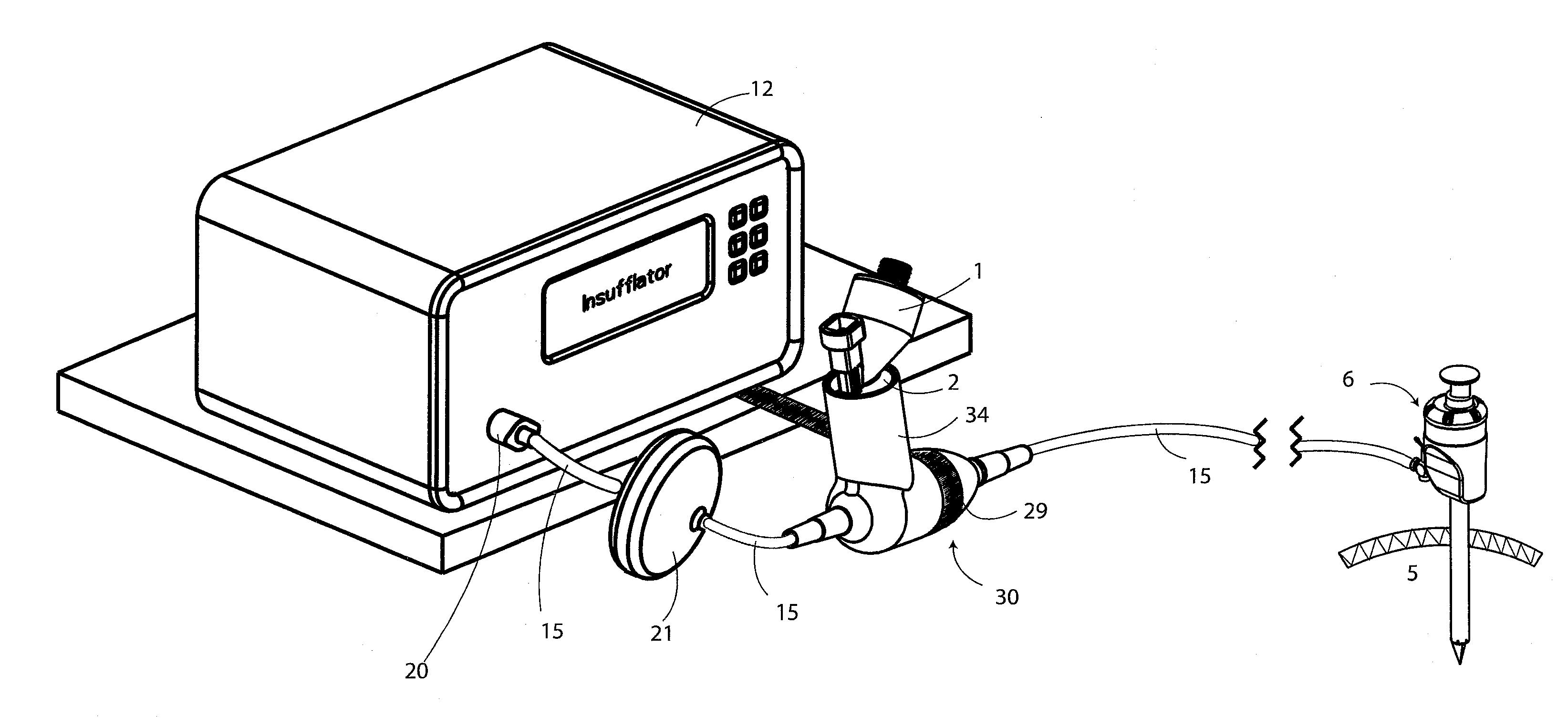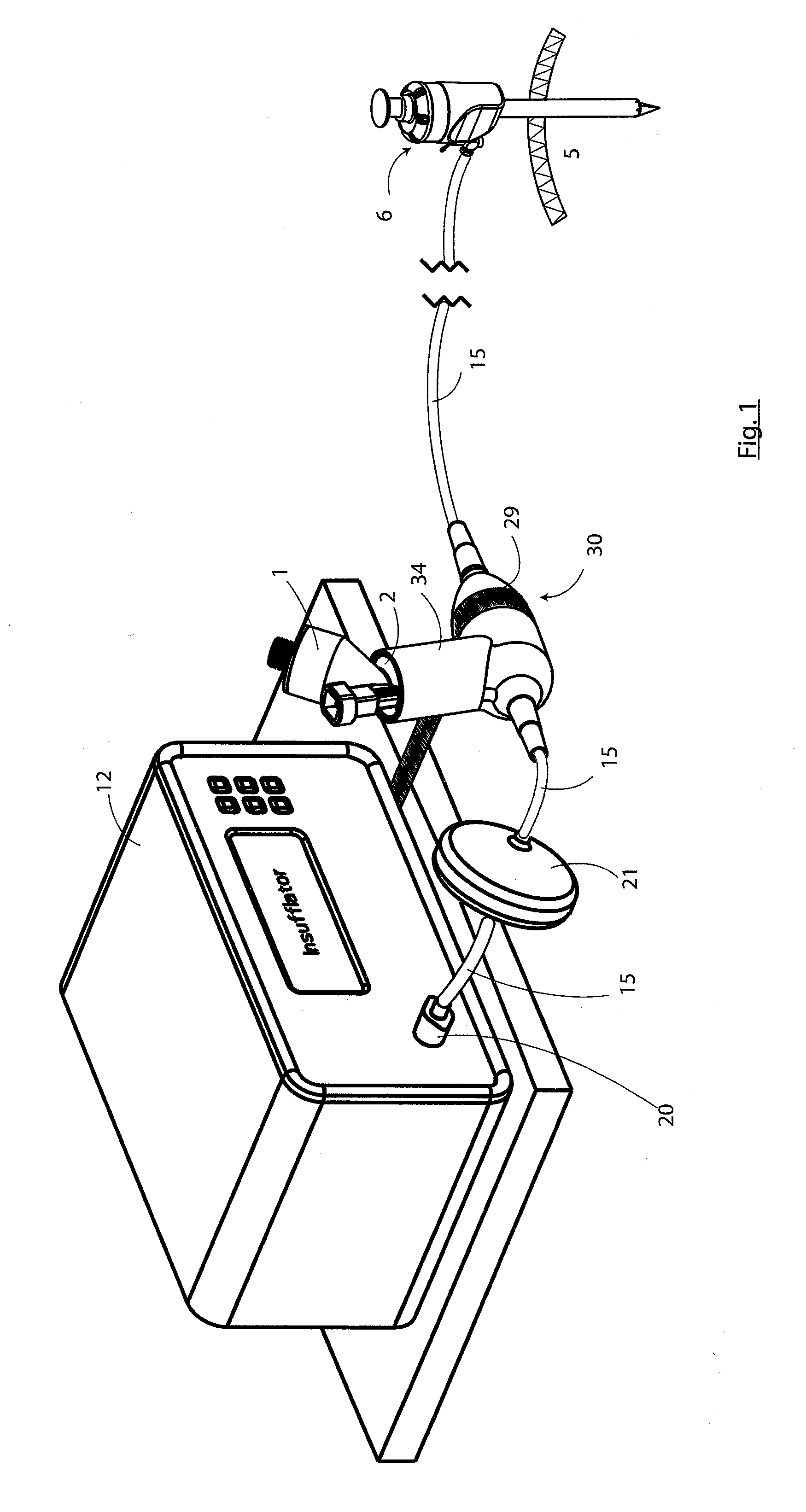Insufflation of body cavities
a body cavity and insufflation technology, applied in the field of insufflation of body cavities, can solve the problems of patient heat loss, insufflation gas conditioning system, and post-surgical pain and significant complications, and achieve the effect of reducing the number of patients
- Summary
- Abstract
- Description
- Claims
- Application Information
AI Technical Summary
Benefits of technology
Problems solved by technology
Method used
Image
Examples
Embodiment Construction
[0082]Referring to FIG. 1 there is illustrated an apparatus according to the invention for use in insufflation of a body cavity 5, in this case through a trocar 6. One such application is laparoscopic surgery. The device is also suitable for use in any situation involving insufflation of a body cavity such as in arthroscopies, pleural cavity insufflation (for example during thoracoscopy), retroperitoneal insufflations (for example retroperitoneoscopy), during hernia repair, during mediastinoscopy and any other such procedure involving insufflation.
[0083]The apparatus comprises a reservoir 1 for storing an liquid solution, an aerosol generator 2 for aerosolising the solution, and a controller 3 for controlling operation of the aerosol generator 2. In the invention aerosolised liquid solution is entrained with insufflation gas. The gas is any suitable insufflation gas such as carbon dioxide. Other examples of suitable insufflation gases are nitrogen, helium and xenon.
[0084]The insuffl...
PUM
 Login to View More
Login to View More Abstract
Description
Claims
Application Information
 Login to View More
Login to View More - R&D
- Intellectual Property
- Life Sciences
- Materials
- Tech Scout
- Unparalleled Data Quality
- Higher Quality Content
- 60% Fewer Hallucinations
Browse by: Latest US Patents, China's latest patents, Technical Efficacy Thesaurus, Application Domain, Technology Topic, Popular Technical Reports.
© 2025 PatSnap. All rights reserved.Legal|Privacy policy|Modern Slavery Act Transparency Statement|Sitemap|About US| Contact US: help@patsnap.com



